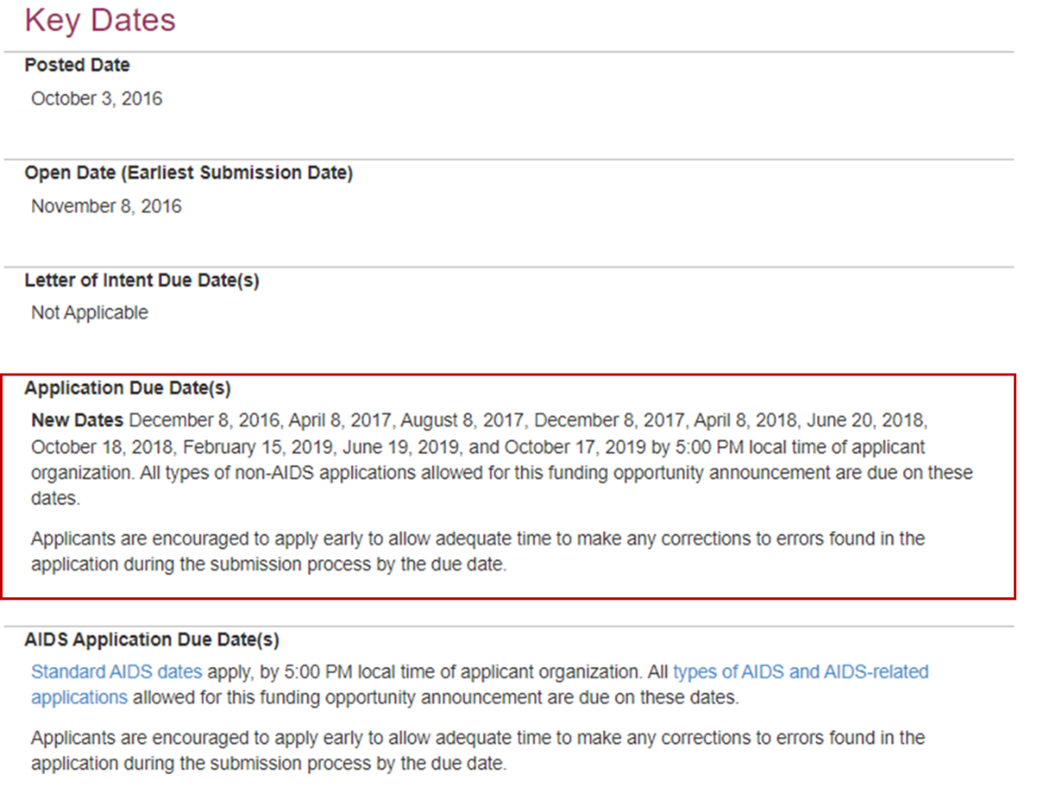This page provides guidance for candidates applying to fellowships for due dates on or after January 25, 2025.
What’s Changing?
The NIH is restructuring the considerations that are used by scientific review panels to evaluate fellowship applications and to identify the most promising candidates from five review criteria into three redefined criteria:
- Candidate’s Preparedness and Potential
- Research Training Plan
- Commitment to Candidate
NIH will also revise the NIH Fellowship Supplemental Form (part of the application package) to:
- Align the application forms with the restructured review criteria – so reviewers have the information they need to apply the criteria
- Reduce redundancy
- Clarify the instructions, so that it is clear which party – candidate or sponsor – is responsible for which sections
Which Applications Will be Affected?
The changes to the fellowship application and review process will apply to:
- Fellowship applications submitted for due dates on or after January 25, 2025
- Applications that use the PHS Fellowship Supplemental Form: Activity codes F30, F31, F32, F33, F99/K00
What Do the Revisions Mean?
NIH defines an applicant as the organization that will submit and administer the award. The candidate is the individual who will conduct the research training plan described in the application.
Thus, typically, the student/trainee is the candidate and their university is the applicant.
- The changes are meant to level the playing field. The revised review criteria allow NIH to ‘cast a wider net’ in identifying promising scientists by decreasing the reliance on narrow markers of academic success and reducing the impact of sponsor or institutional reputation. We encourage you to consider applying, even if you don’t think of yourself as a “competitive NIH fellowship candidate”.
- Candidates must meet all eligibility requirements which remain the same. For example, candidates must be U.S. citizens, noncitizen nationals, or permanent residents.
- Candidates should carefully review the upcoming changes to application instructions. Applications submitted on or after January 25, 2025 will differ significantly from those submitted previously. Changes will affect the materials submitted by the candidate, sponsor(s), and referees.
- Fellowship (F) funding opportunities provide details on required application materials and review criteria.
- Use the correct funding opportunity, application instructions, and forms for your target due date. Updated forms and instructions (FORMS-I) needed to support the changes will be available this fall.
(including resubmission applications where the original application used old guidelines):
- Funding opportunities. To ensure each funding opportunity has accurate applicant guidance and information on how applications will be peer reviewed, fellowship funding opportunities are being reissued if they will be accepting applications for due dates on or after January 25, 2025. Be on the lookout for these reissued funding opportunities in late 2024, early 2025.
-
Application forms. Application forms are included with
each funding opportunity.
- You must use FORMS-I application forms.
- Check out Do I Have the Right Forms for My Application? for help identifying the form version.
- Application instructions. You must use Version I instructions which will be available on the How to Apply-Application Guide page no later than October 25, 2024.
- Resubmissions. If resubmitting an application to address reviewer feedback, be sure your application aligns with the instructions for your target due date.
- Reference letters. NIH is revising the instructions for reference letter writers. Revised instructions to provide to referees will be available on the NIH Grants page on Reference Letters later in 2024. The changes are meant to ensure that letters better assist reviewers in understanding the candidate’s strengths, opportunities for growth, and potential to pursue a productive career within the biomedical research ecosystem.
- Funding opportunities. Use current funding opportunities that support due dates prior to January 25.
-
Application forms. Application forms are included
with each funding opportunity.
- You must use FORMS-H application forms.
- Check out Do I Have the Right Forms for My Application? for help identifying the form version.
- Application instructions. You must use Version H instructions found on the How to Apply-Application Guide.
- Reference Letters. Instructions to provide to referees are available on the NIH Grants page on Reference Letters.
More Tips
- Always read the entire funding opportunity announcement carefully. Be sure to:
- Review the review criteria. Ensure your application is responsive to the review criteria included in Section V. Application Review Information of the funding opportunity to which you are applying.
Always double check the Related Notices section of the funding opportunity you plan to apply to as the due date approaches, to learn about any changes. This section will include links to reissued funding opportunities.

Always check the Key Dates section of the funding opportunity for details on due dates, expiration dates, and any date changes.
